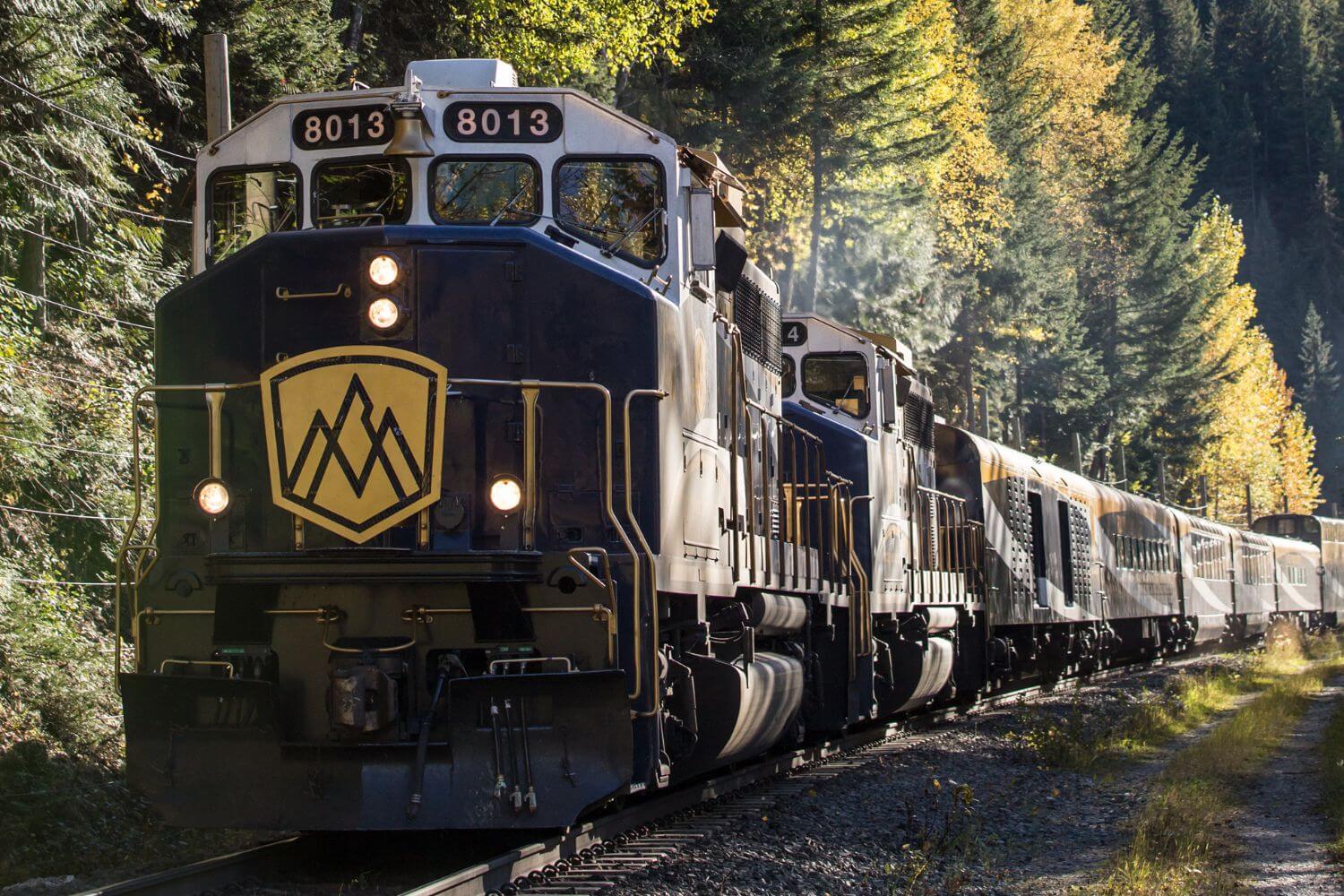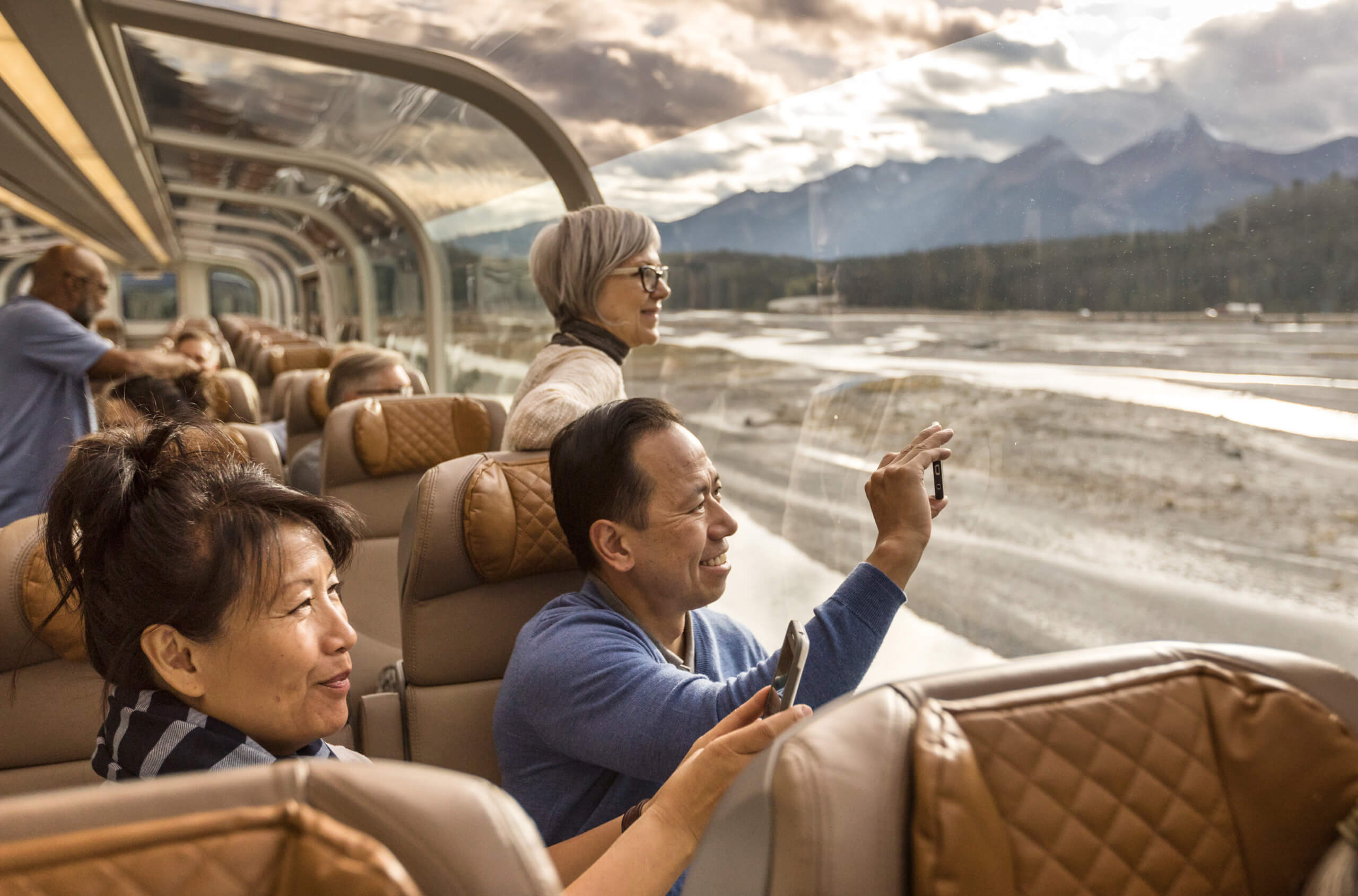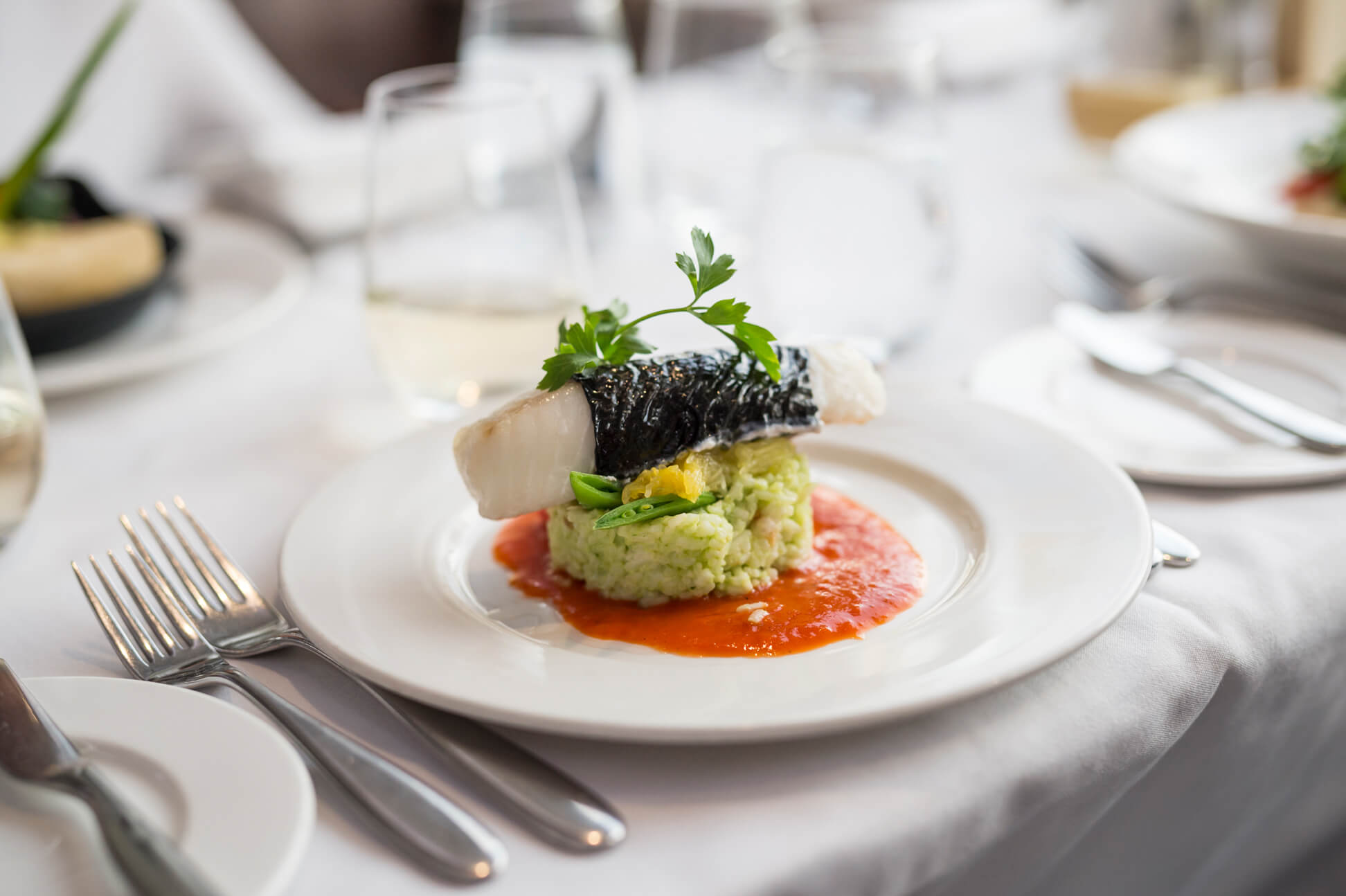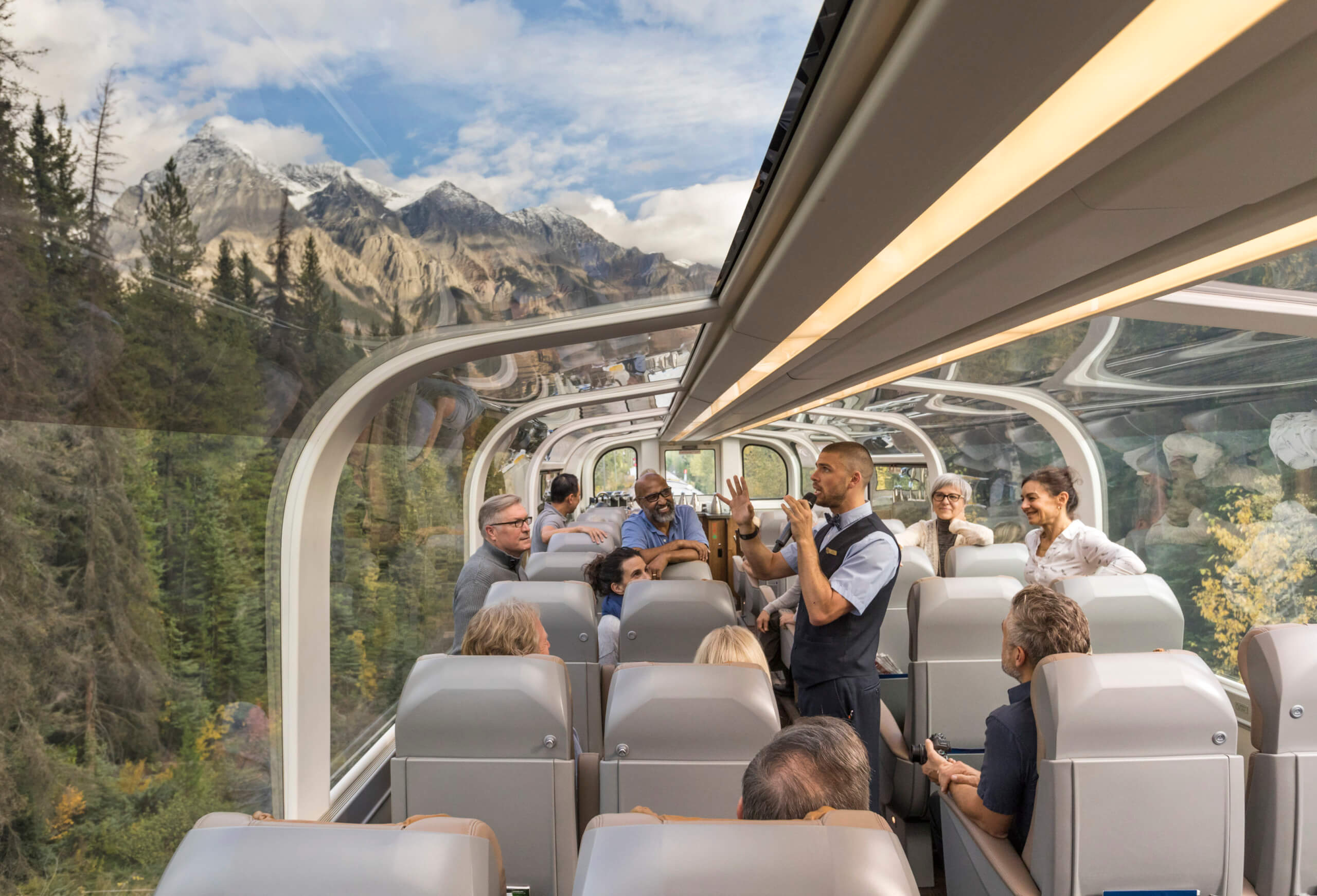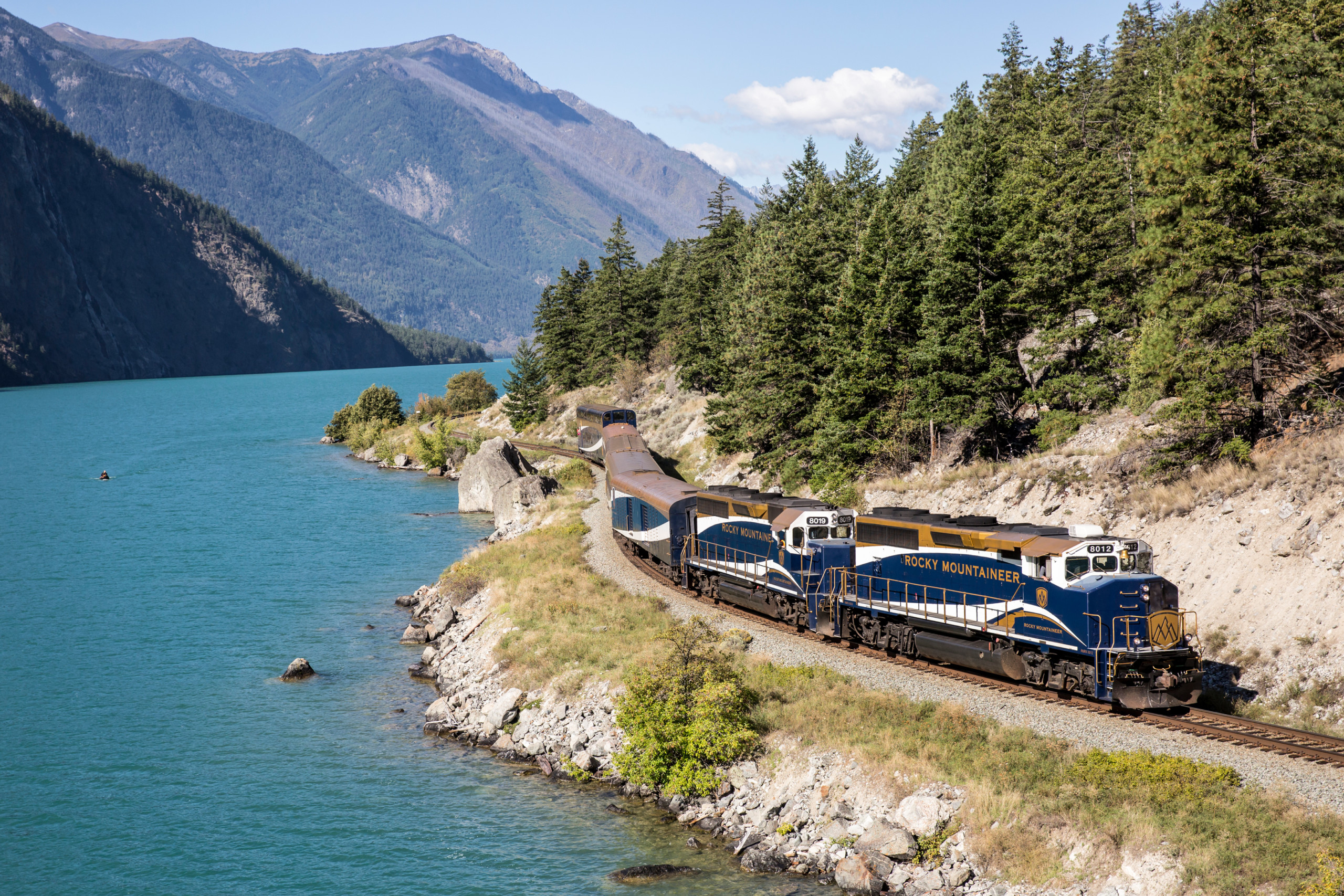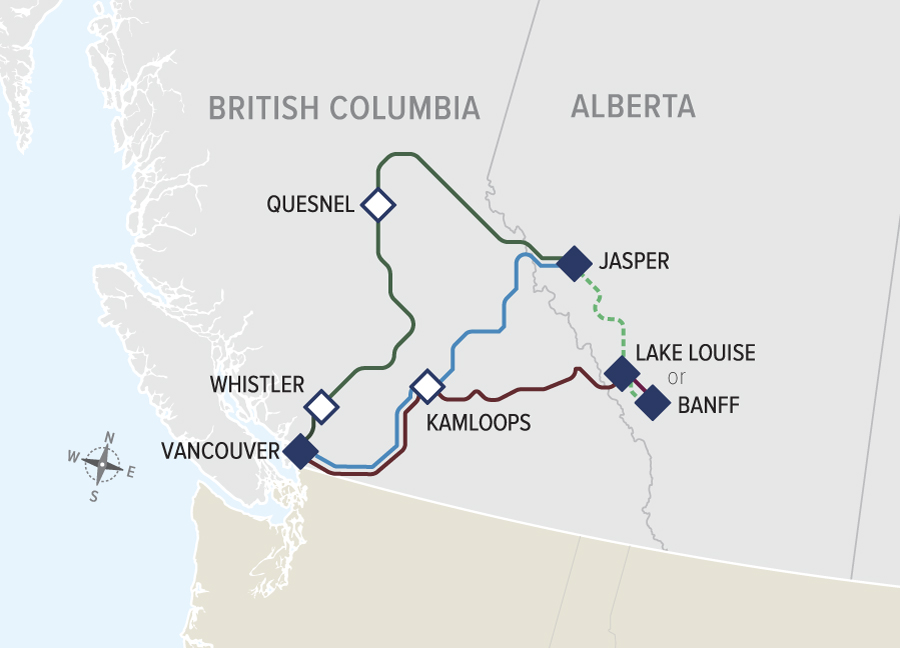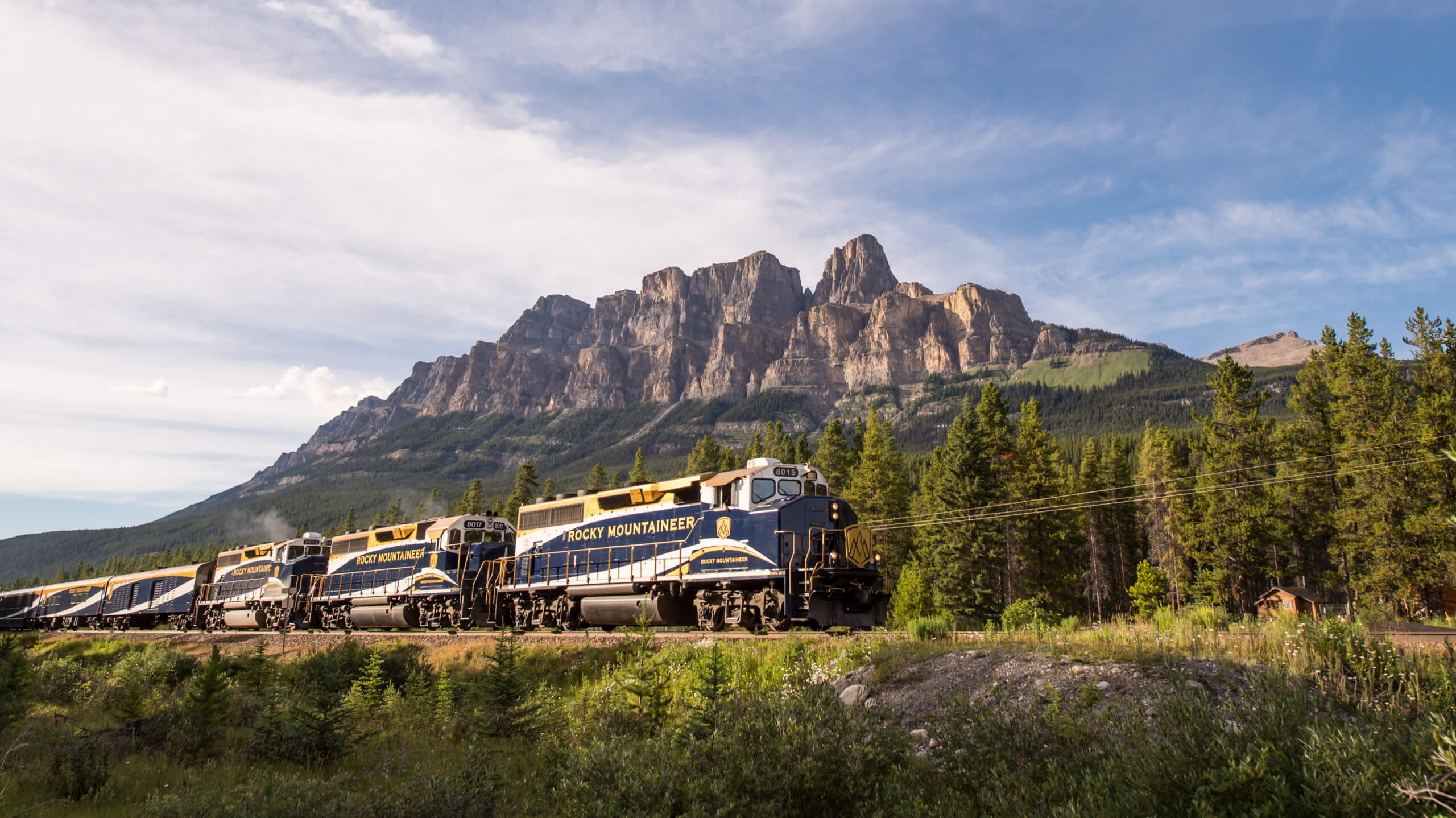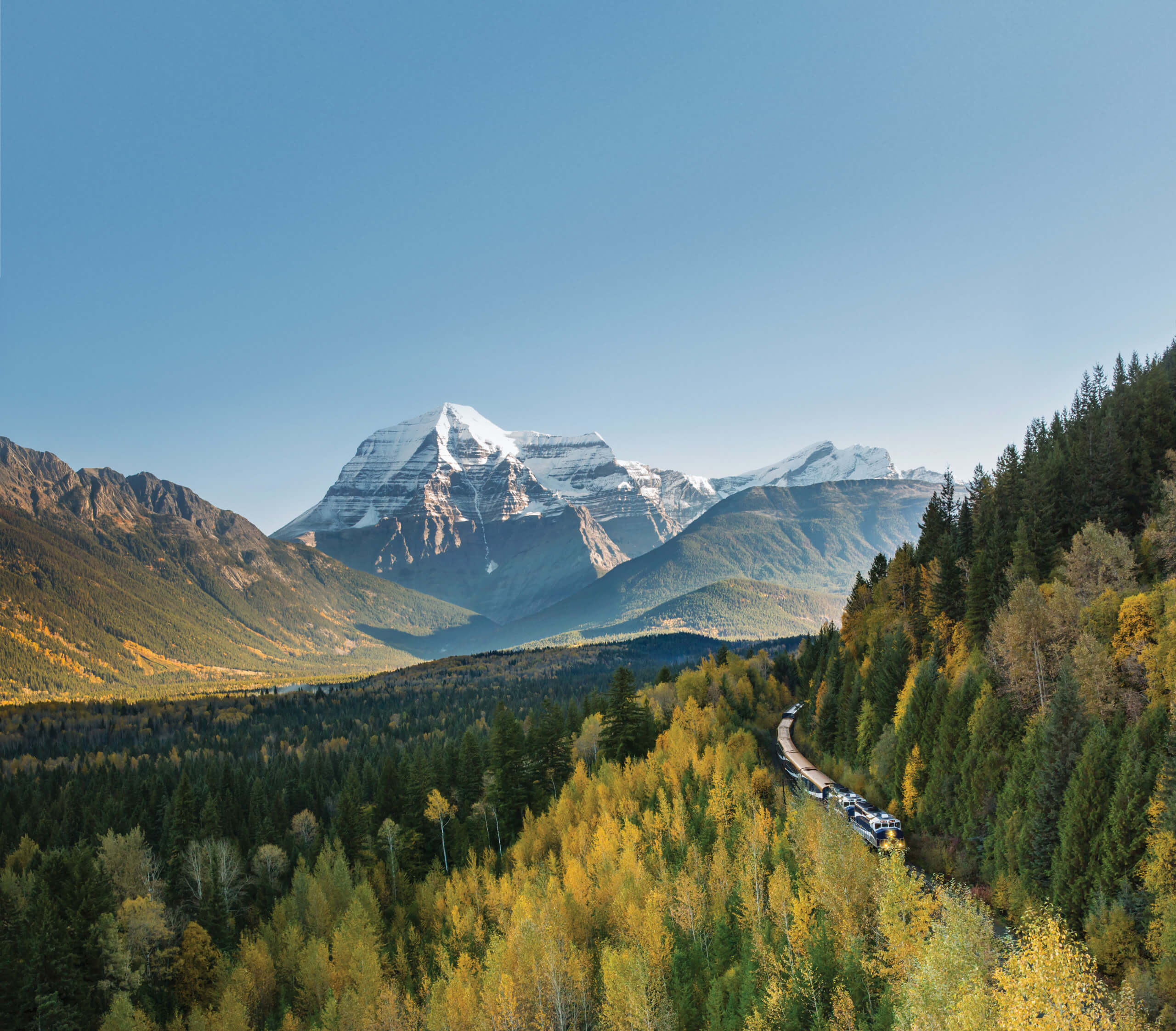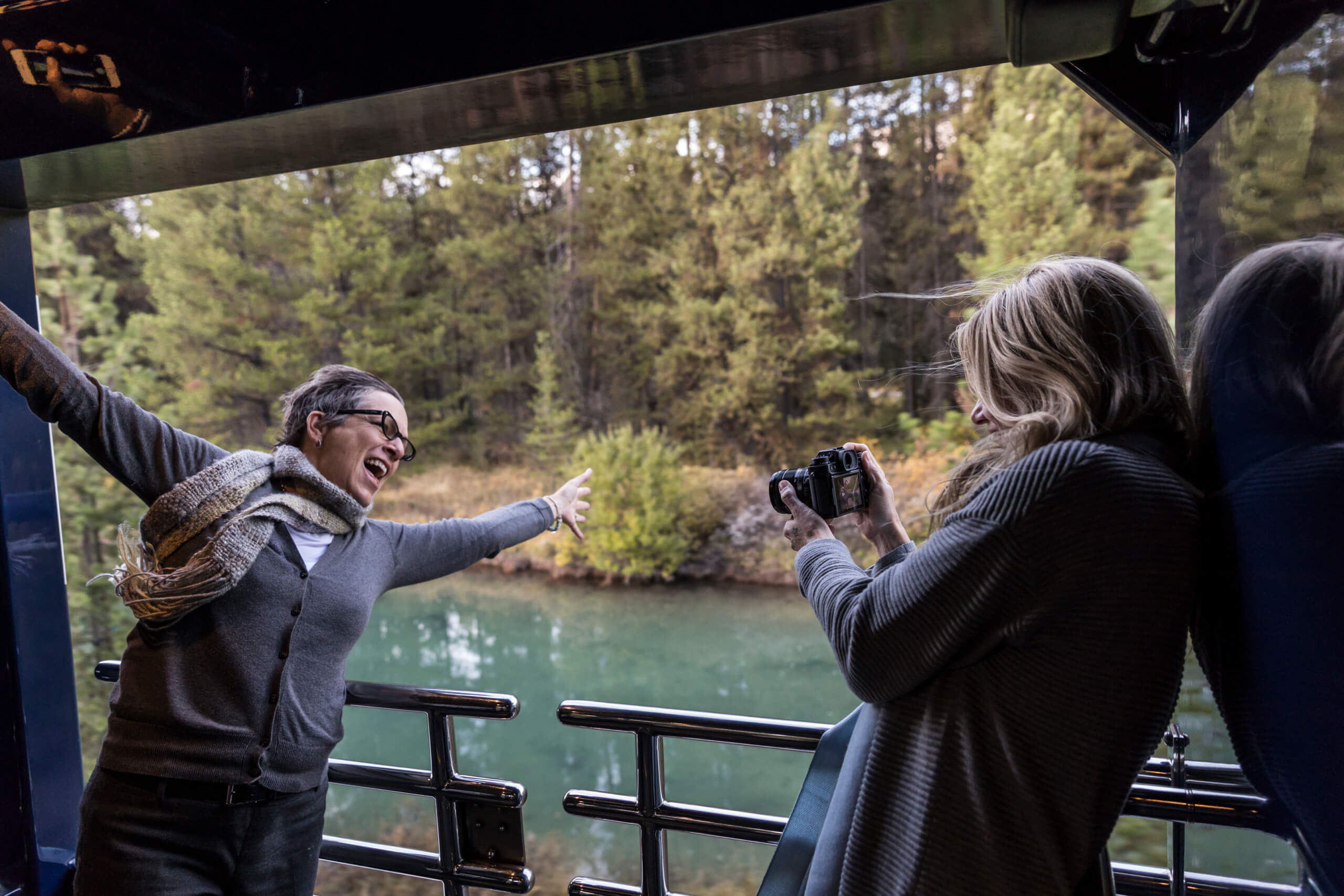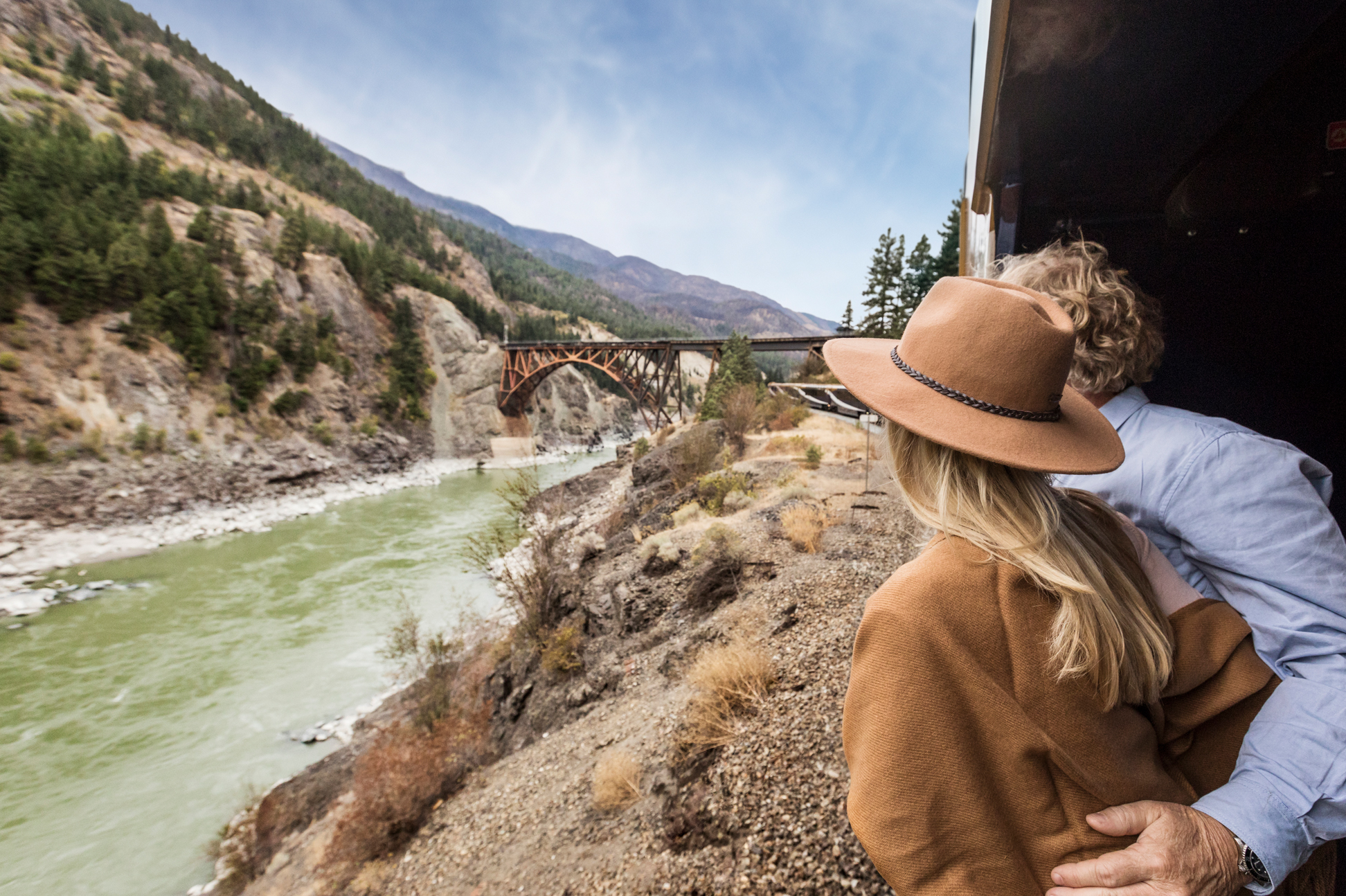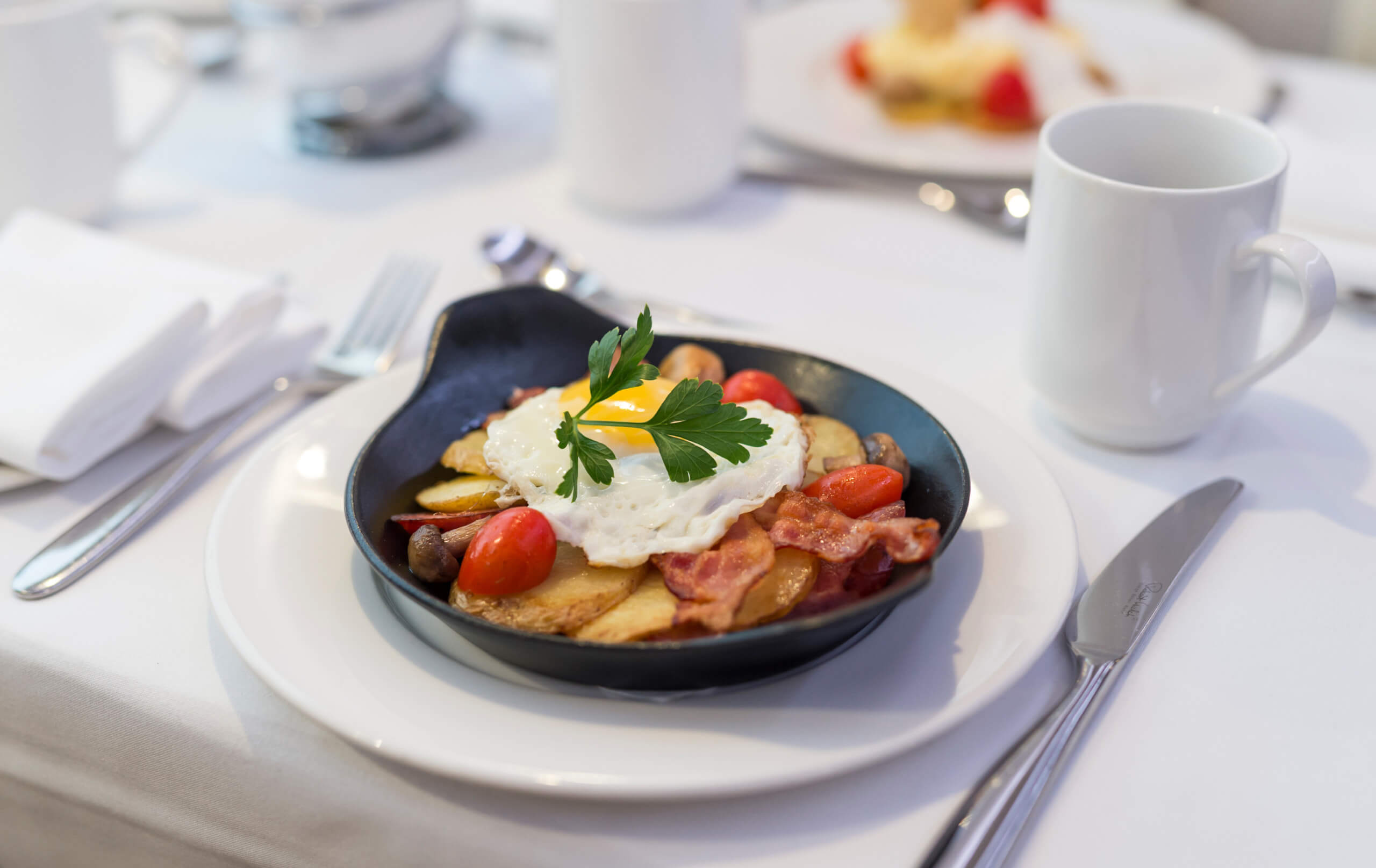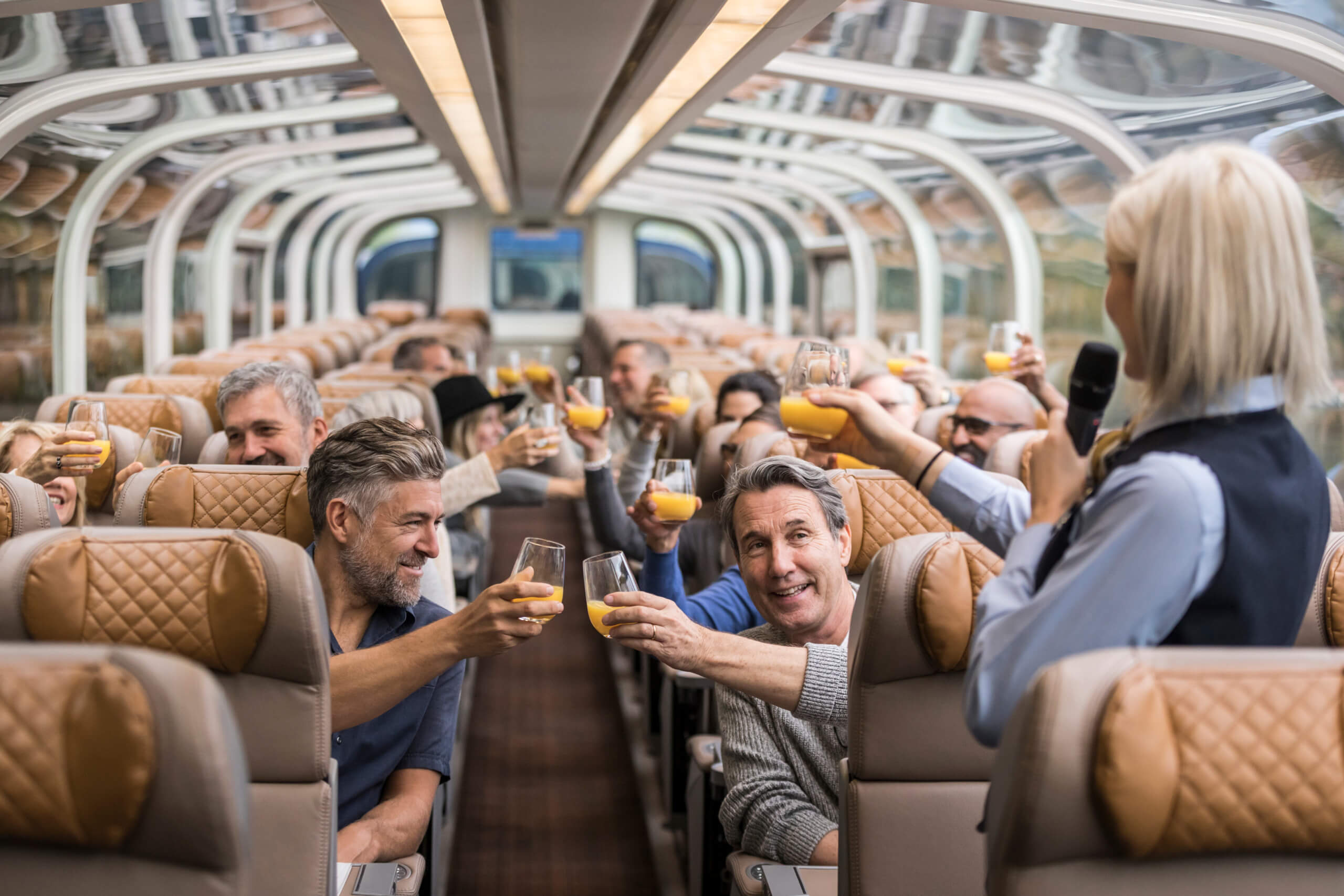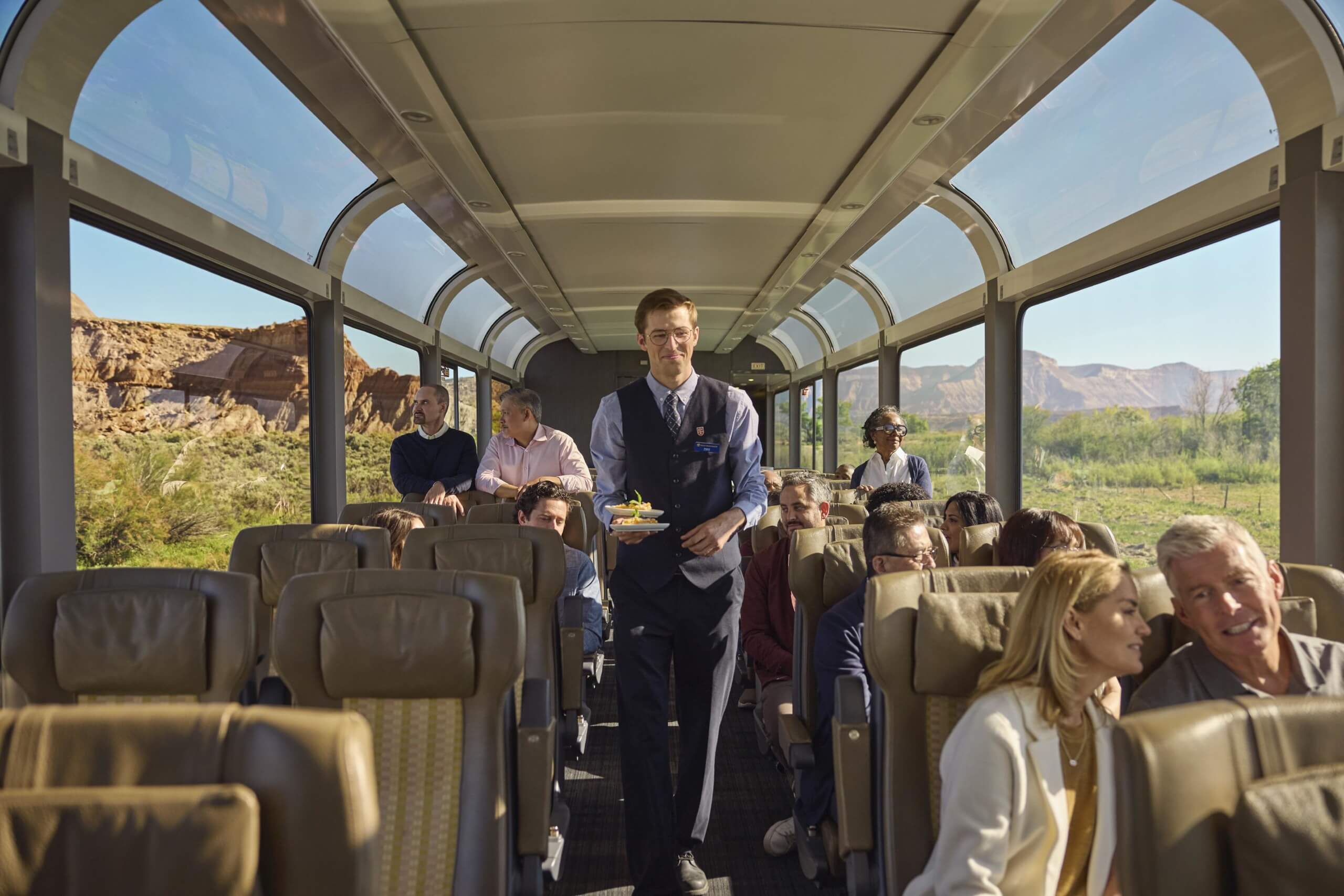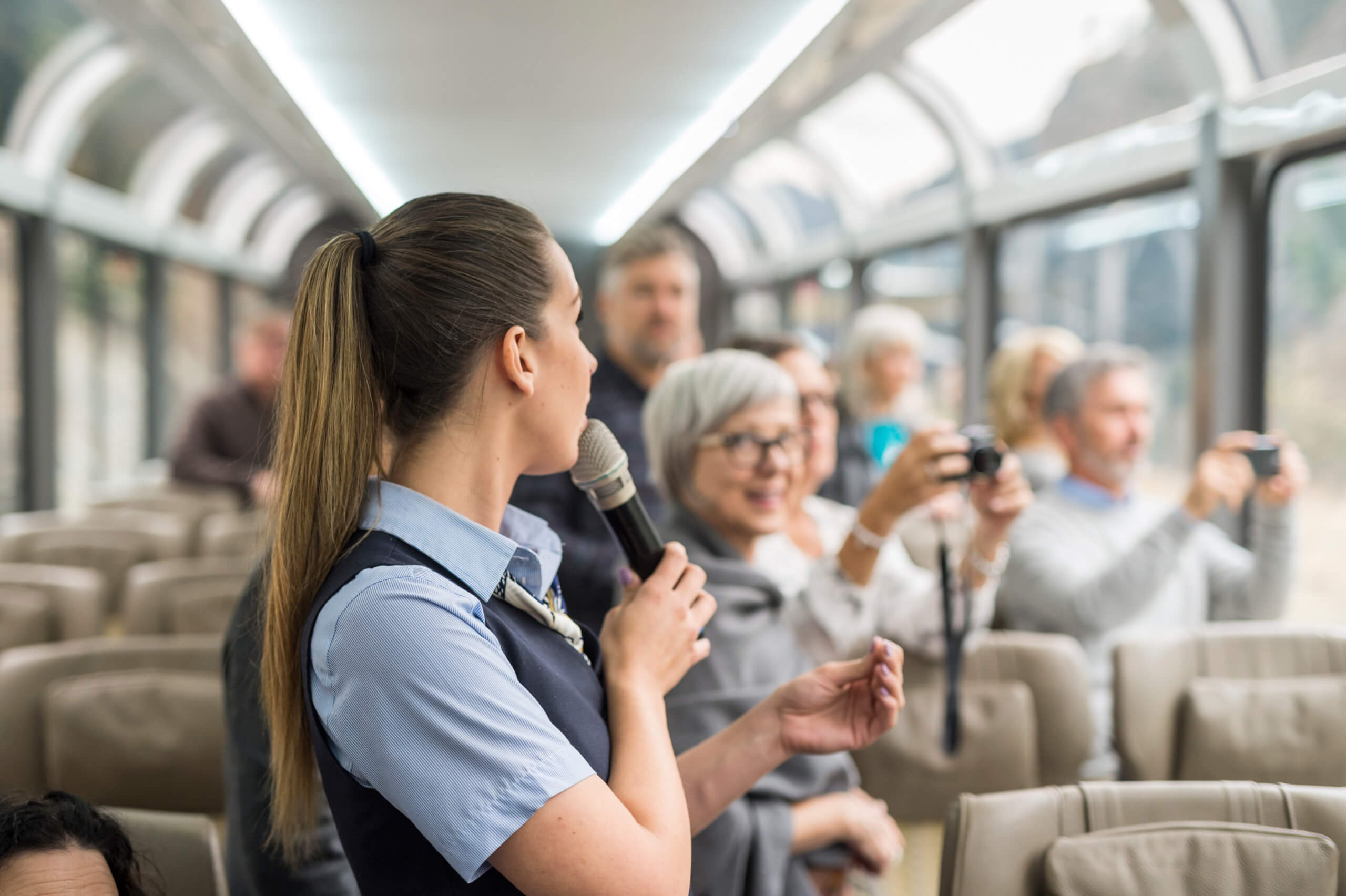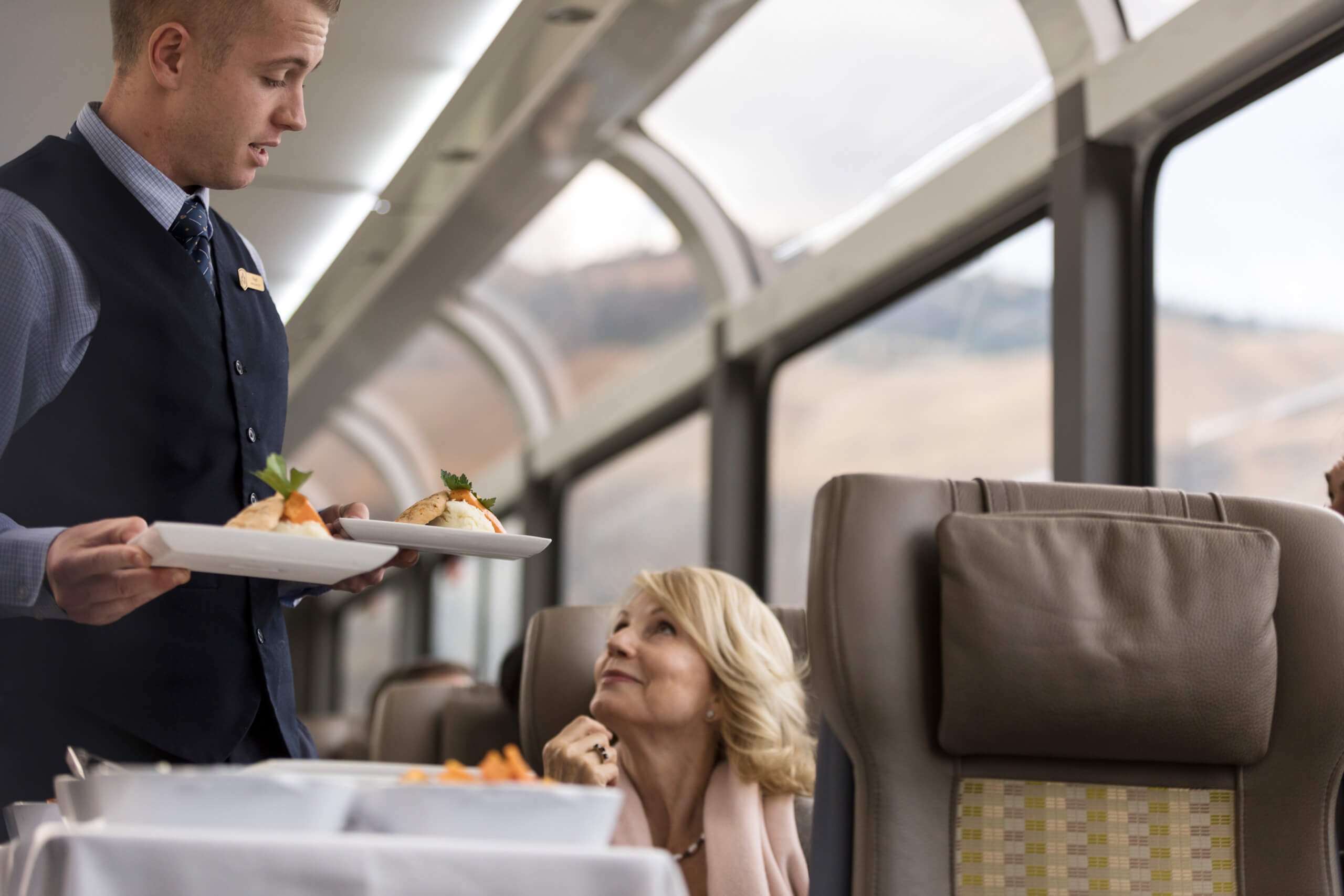Step Aboard The World’s Most Luxurious Train
For the third year in a row, Canada’s Rocky Mountaineer has been recognized as the World’s Leading Luxury Train by the prestigious World Travel Awards. What makes this train so special?
Let us introduce you to the magic of riding on the Rocky Mountaineer. Read on for details about the train, the routes and what the journey looks like inside.
To book a Rocky Mountaineer experience, please reach out to us or visit our Train Journeys page for more rail inspiration.
What is the Rocky Mountaineer?
The Rocky Mountaineer is a premium sightseeing train that has been in operation since 1990. It travels on three distinct routes between Vancouver and the Canadian Rockies (as well as a route through the U.S). We will explain the Canadian routes and how they differ below, but first there are two important points to understand about the Rocky Mountaineer:
- It is not a commuter train: its primary purpose is to showcase the stunning scenery of British Columbia and Alberta, not to transport people from point A to point B.
- It does not have sleeper cars: while all of the Rocky Mountaineer excursions include at least one overnight stay, you don’t actually get to sleep on the train. The Rocky Mountaineer is designed to show you all of the scenery between your destinations so it only travels during the day. Guests overnight at local hotels and the next morning, they board the train again and continue on the journey.
What makes the Rocky Mountaineer luxurious?
There are a few factors that give the Rocky Mountaineer an edge over its competition when it comes to the world of luxury train travel.
The cars are specially built domes:
All the cars on the Rocky Mountaineer are purpose-built dome cars designed for comfort and maximum viewing of the rolling scenery. The trains travel at an average of 50 km/hr to allow guests to see and appreciate the landscapes and to maximize the amount of wildlife sightings.
The food is freshly prepared onboard by chefs:
The food is prepared using locally sourced products inspired by the regions of Western Canada and the Pacific Northwest. Every day on the train, guests are served a chef-prepared gourmet breakfast and 3-course lunch. Think frittatas and soufflés for breakfast, Alberta beef ribs or Pacific salmon for lunch.
Wash it all down with local wines, craft beers or a cup of tea — all beverages are included, as are morning and afternoon snacks.
The hosts are expert storytellers:
Luxury can mean different things to different people, but companies that want to elevate their products know that engaging experiences mean making human connections. Each coach has its own hosts that not only provide exceptional food and beverage service but also create a welcoming and enjoyable atmosphere for guests.
They are expert storytellers who tell interesting tales of folklore and history of the region and passing landmarks, often weaving in their own experiences, answering questions and encouraging engagement.
The scenery is top-notch:
You really can’t talk about luxury on the Rocky Mountaineer without referencing the spectacular scenery. Each of the three Canadian routes take you past jaw-dropping mountain peaks and through some of the most incredible wilderness areas in British Columbia.
Wildlife sightings are common, although never guaranteed of course. Bear (both black and grizzly), bighorn sheep, moose and eagles are among some of the animals commonly spotted on these journeys.
How do the Rocky Mountaineer routes differ?
As we mentioned earlier, the Rocky Mountaineer operates three different routes between Vancouver and the Rocky Mountains. Routes run both ways so you can go either start or end in Vancouver, depending on your other travel plans (we can help you with that).
First Passage to the West:
The dark red route on the map above marks the journey called the First Passage to the West.
Travelling eastbound, the train crosses over the Fraser Valley and into the peaks of the Coast and Cascade Mountains. It pass over famous Hell’s Gate, an abrupt narrowing of the Fraser River that creates some spectacular rushing whitewater rapids. The full day on the train ends in Kamloops.
The next morning, the train departs bright and early for a full day of spectacular scenery as it makes its way to Banff National Park. There are views of rocky shores, ranchlands and high mountain passes.
This is the only passenger train that operates on the original Canadian Pacific trans-continental line built in 1885. This historic rail line is sometimes known as the Kicking Horse route because of the mountain pass it crosses to get over the Rocky Mountains. It climbs over Rogers Pass, Kicking Horse Canyon, and through the famous Spiral Tunnels. After passing through the historic Lake Louise Train Station, guests will have spectacular views of Castle Mountain. The journey ends in the evening as the train arrives in the lively town of Banff.
Journey Through the Clouds:
The blue route on the map above marks the Journey Through The Clouds.
Travelling eastbound, the train follows the same route to Kamloops as its sister train above but veers north on day two. Instead of taking the Kicking Horse Pass to get over the Rockies, this route uses the rail line that goes through Jasper National Park.
Much of this rail line goes along a route that has no roads, making it a landscape that can only be viewed by train. It offers an exclusive view of Pyramid Falls from a vantage point only accessible by rail and passes by stunning Mount Robson, the tallest peak in the Canadian Rockies at 3,954 metres.
Rainforest to Gold Rush:
The green route on the map above marks the Rainforest to Gold Rush route, the only one of the Rocky Mountaineer journeys to include two overnight stays.
This 3-day trip has one short train day and two long train days. Going eastbound, the train first winds around the scenic fjords of Howe Sound before heading into the majestic Coast Mountains and stopping mid-day in the world-famous town of Whistler. This short train day gives guests time to explore the many shops and restaurants in the village. Or take a ride on the impressive Peak-2-Peak Gondola.
The next day, the train continues along a historic rail route through the gold-flecked canyons of British Columbia’s central interior that drew thousands of prospectors during the Cariboo Gold Rush of 1862. The day’s journey ends in Quesnel, a vibrant community situated at the confluence of the Quesnel and Fraser rivers.
On the third day, the train goes past serene lakes, rushing waterfalls and an increasingly mountainous terrain. Guests soon find themselves surrounded by sky-high mountain peaks on all sides, including the memorable Mount Robson. The final few hours of the trip follows the same route as the Journey Through the Clouds and ends in beautiful Jasper.
What’s the difference between GoldLeaf and SilverLeaf service?
You may have heard that the Rocky Mountaineer has two levels of service but rest assured that both “classes’ offer an incredible and luxurious experience.
GoldLeaf Service on the Rocky Mountaineer:
Passengers who chose the GoldLeaf service get an elevated experience — literally. The cars for the GoldLeaf service are specially built bi-level glass dome coaches.
The upper level has beautiful padded seats and is almost entirely made of glass so you won’t have any viewing obstructions. The car is raised to allow for clean and clear views over the tree line.
The lower level has a dining room with huge windows and tables set for four. Meals are served downstairs, while upstairs is for lounging and relaxing. Beverage and snack service is available upstairs.
GoldLeaf coaches also features large outdoor viewing platforms so guests can go outside and enjoy the fresh mountain air as well as take photos without the obstruction of glass.
Here are some photos to show you what GoldLeaf service is like:
SilverLeaf Service on the Rocky Mountaineer:
Passengers who choose SilverLeaf service travel in custom-designed glass-dome coaches. The single-level cars have oversized windows that wrap up into the roof and reclining seats.
Since there is no second level, passengers relax in the same seats for the duration of travel and meals are served to each person’s seat. There is a small outdoor viewing area where you can stretch your legs and take photos outside.
Please note that SilverLeaf is not available on the Rainforest to Gold Rush route.
Here are some photos of what SilverLeaf service is like onboard:
We hope we’ve inspired you to consider booking a trip on the world’s most luxurious train. If you have any questions, please don’t hesitate to reach out.



